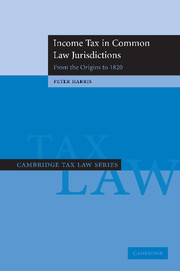Book contents
- Frontmatter
- Contents
- List of tables
- List of maps
- List of statutes
- Preface
- Introduction
- 1 To 1641: Searching for seeds in feudal England
- 2 1642 to 1688: Religion, revolt and restoration
- 3 1688 to 1763: Regional relations, colonial competition and impending independence
- 4 1763 to 1792: Empire divided
- 5 1793 to 1820: the Napoleonic battle, the mighty engine and the immediate aftermath
- Conclusion
- Appendix
- References
- Index
2 - 1642 to 1688: Religion, revolt and restoration
Published online by Cambridge University Press: 10 December 2009
- Frontmatter
- Contents
- List of tables
- List of maps
- List of statutes
- Preface
- Introduction
- 1 To 1641: Searching for seeds in feudal England
- 2 1642 to 1688: Religion, revolt and restoration
- 3 1688 to 1763: Regional relations, colonial competition and impending independence
- 4 1763 to 1792: Empire divided
- 5 1793 to 1820: the Napoleonic battle, the mighty engine and the immediate aftermath
- Conclusion
- Appendix
- References
- Index
Summary
Compared to the 500 years covered by Chapter 1, this chapter covers a comparatively brief period of less than fifty years from the outbreak of the English Civil War through the Restoration and to the eve of the Glorious Revolution in 1688. This was a turbulent period, involving religious clashes, the continuing struggle for power between the Crown and Parliament, expansion of colonies in the New World resulting in jostling to secure new trade and, often as a consequence of these other factors, war. During this period major issues in England continue to spill over and have important effects on developments in the colonies. Inevitably, as with other unsettled times, this period sees major developments both in English direct taxation as well as in the direct tax systems of the colonies.
The chapter is divided under four headings. The first heading is devoted to developments in the tax system during the period of the Commonwealth. It focuses on the form of direct taxation used by the English Parliament but also considers important developments in the colonies, where the issues and fallout of the English Civil War reverberated. The second heading takes stock of developments in landholding and accounting to the 1660s. The period from the passage of the Statute of Uses of 1536 (see above at p. 62) to the Glorious Revolution saw changes in the manner in which land was held in England and, in particular, the form of family settlements.
- Type
- Chapter
- Information
- Income Tax in Common Law Jurisdictions , pp. 109 - 177Publisher: Cambridge University PressPrint publication year: 2006



